The scenic landscapes of South Carolina are home to some of the most stunning and enchanting natural springs throughout the country. Many springs may be famous for their healing properties, while others provide families with a wonderful location to enjoy their weekends. From the mineral-rich waters of Coker Spring to the serene springs at God’s Acres, these are the eight most iconic natural springs in South Carolina.
8. God’s Acres Healing Spring
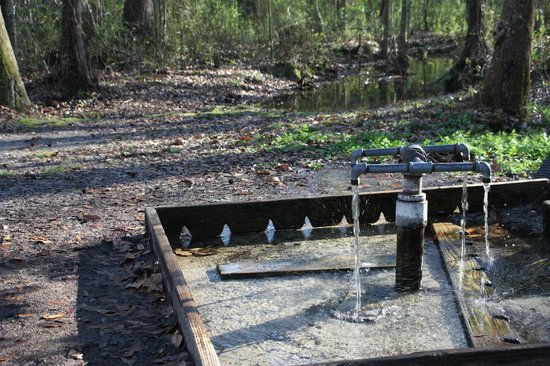
Although it is within a forest, locals regularly come to God’s Acres Healing Spring for fresh drinking water.
Kicking off our list is the crystal-clear spring known as God’s Acres Healing Spring. The freshwater spring rests within a rural forest, hidden behind a local church in Blackville. It flows from nearby wells and provides locals with a source of clean drinking water. Hundreds of years ago, Native Americans deemed the spring a sacred site for its abundant healing properties. Folklore claims that wounded soldiers fighting in the American Revolution were thrust into the spring and emerged fully recovered. While the spring is too shallow for swimming, South Carolinians travel hundreds of miles to collect the precious water from the spring’s famous spigots.
7. Coker Spring
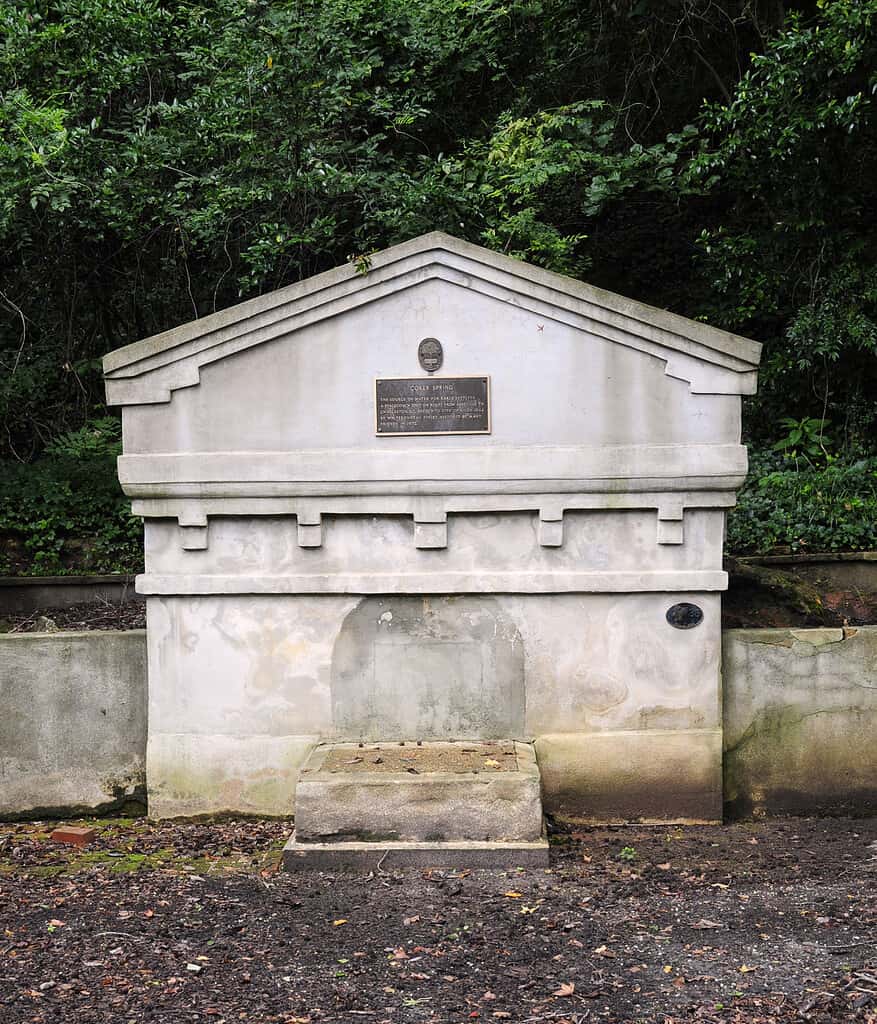
Aiken is home to Coker Spring, which served as a drinking site for Native Americans in the 1700s.
©Bill Fitzpatrick, CC BY-SA 3.0 , via Wikimedia Commons – Original / License
The significant spring is located in Aiken, just a few miles from the Georgia border. Coker Spring forms a junction where the water converges with the Earth’s surface. A quaint and peaceful path marks the journey to ancient spring, known as the Old Tory Trail. Coker Spring is far too shallow for swimming or wading, yet it has remained a freshwater source since prehistoric times. During the American Revolution, British troops seeking refreshment once traversed the Old Tory Trail to reach Coker Springs.
6. Moody Spring
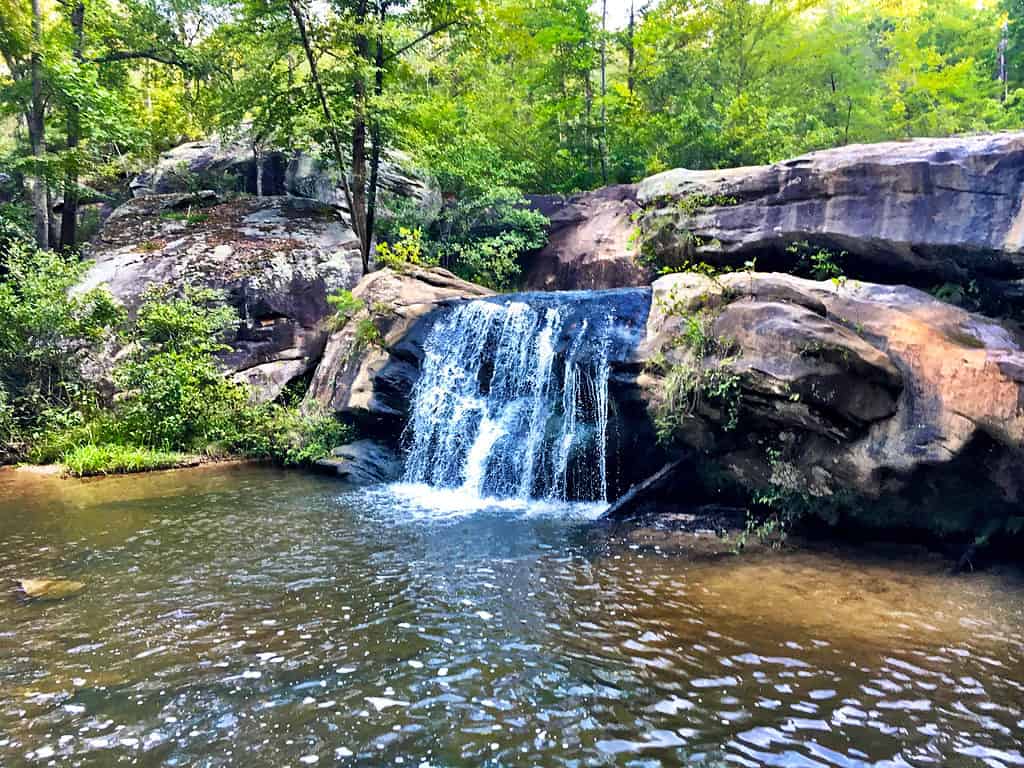
Moody Spring is just under a 20-mile drive from Walhalla.
©marriedwanderlust/Shutterstock.com
Named after one of the earliest families to settle in Oconee County, Moody Spring is a natural oasis brimming with spooky folklore. Moody Spring rests just outside of Walhalla, providing South Carolinians with some of the state’s freshest, purest drinking water. It flows at a rate of 1.5 gallons of water per minute, playing a crucial role in irrigation and farming practices. Locals claim that the ghost of a hitchhiker appears on rainy nights, eager to haunt those who travel along the roads of the Sumter National Forest. Locals believe the apparition patrols the historic spring and wards off tourists on cold, dreary nights.
5. Blenheim Mineral Springs
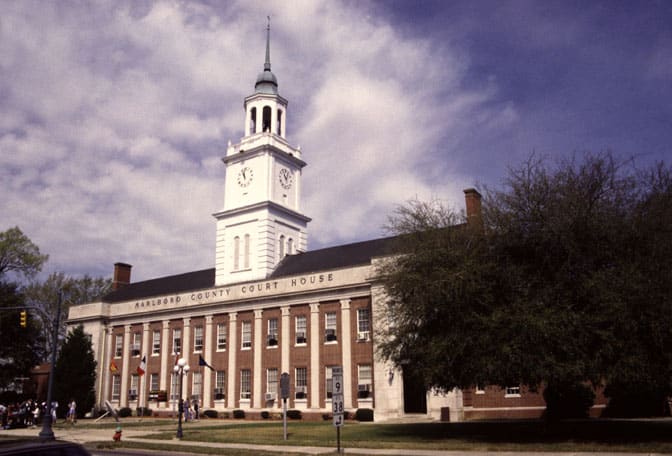
Blenheim Mineral Springs rests just outside of the historic Marlboro County.
First discovered in 1781 by American soldier James Spears, Blenheim Mineral Springs is one of the oldest freshwater sources in the state. The ancient location lies in Blenheim, just off the 381 Highway in Marlboro County. Because of its mineral-rich water, the spring is said to have powerful healing properties. In the late 1890s, Dr. Charles R. May urged his patients to drink water from the spring to heal persisting stomach issues. As a result, May established the Blenheim Ginger Ale company, exclusively sourcing his water from the local spring. Blenheim Mineral Springs quickly became a historic attraction and remains a popular site for fresh drinking water.
4. Williamston Mineral Spring Park

Anderson County is home to the fabled Williamston Mineral Spring, which provided a natural source of water for the Williamston Carbonating Company.
West Allen Williams first discovered the natural spring on his property in 1842 and was convinced that the water possessed unique healing properties. The spring rests in the small village of Williamston, surrounded by a gorgeous and lively park. Williamston Mineral Spring is the first location on our list that offers a getaway destination for tourists and locals alike. During the holidays, the park is adorned with lights and decorations and hosts a jubilant Christmas celebration. Although the spring is not as large as others on this list, it previously served as the water source for the Williamston Carbonating Company.
3. Chick Springs
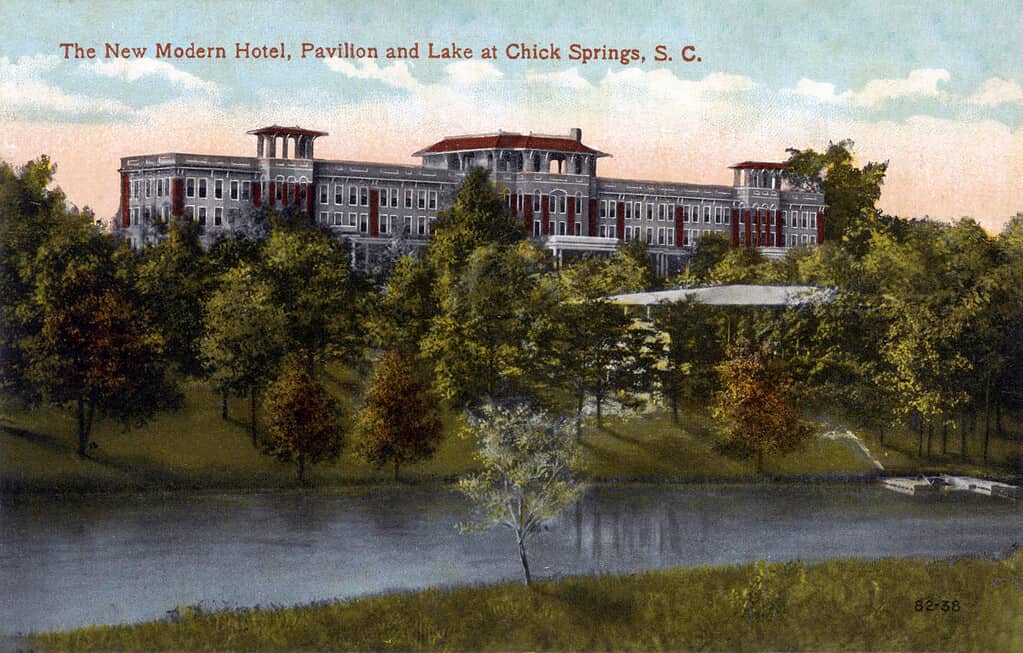
Before Chick Springs was a public park, it served as a hotel during the early 1900s.
©South Caroliniana Library, Public domain (Valentine-Souvenir Post Card Co., New York City (publisher)), via Wikimedia Commons – Original / License
Located near the Tennessee border in the town of Taylors, Chick Springs has the most unique history of any spring on our list. Native Americans living along the Enoree River previously used the spring’s water for its medicinal qualities. However, the land was later assumed by Dr. Burwell Chick. As a result, Burwell’s sons eventually transformed the land into a hotel before it burned down in 1907. Soon after being rebuilt, it was repurposed as a military academy and later became a small car dealership. Chick Springs is a public park, where the historic spring is preserved by a tiny spring house and gazebo.
2. Glendale Springs
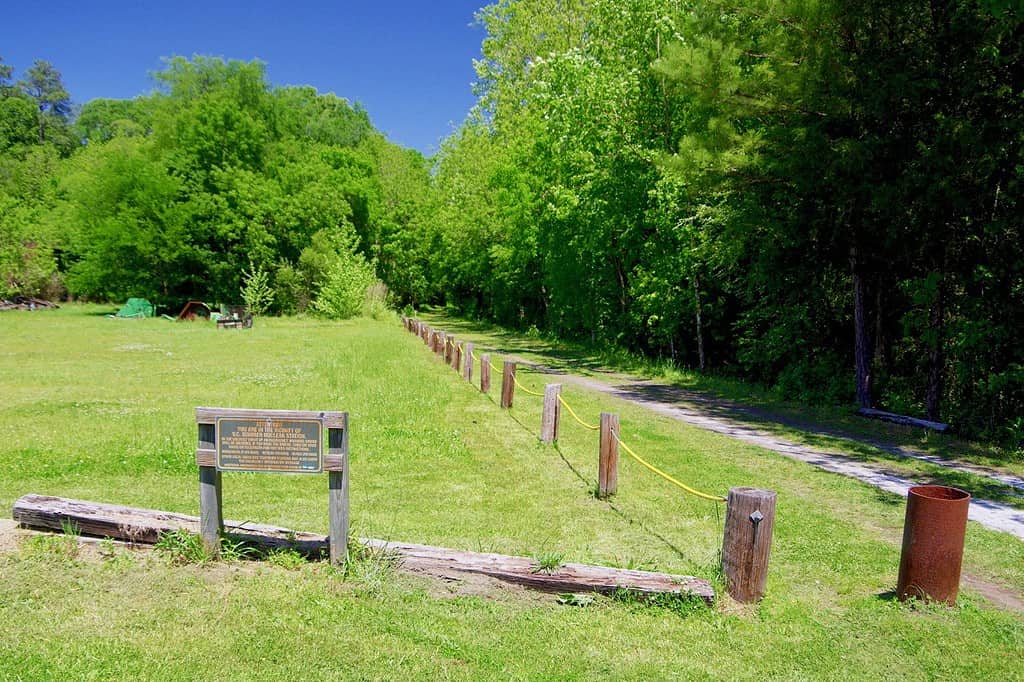
The Palmetto Trail extends throughout Spartanburg and leads directly to Glendale Springs in Bamberg County.
Glendale Springs, in Bamberg County, was discovered by a Cherokee medicine man who believed the water contained unique healing properties. It was rumored that former President George Washington visited the mineral-rich springs on a trip to neighboring Georgia. Calcium, magnesium, and sulfur compounds exist within the water found at Glendale Springs, explaining why Spartanburg and Bamberg residents believed in its medical properties. The Palmetto Trail is a publicly accessible hike that leads directly to the spring and offers a stunning view of the Storey Branch Creek.
1. Boiling Springs

After one of the springs at Boiling Springs dried up, Lake Bowen became the primary tourist attraction in Spartanburg County.
©SHoener/Shutterstock.com
The small town of Spartanburg County is home to the fabled, constantly changing Boiling Springs. In the late 1700s, the land supported a natural geyser that shot boiling water six feet into the air. At the time, the natural phenomenon attracted thousands of travelers and quickly became a famous destination. By the 1990s, the geyser slowly deteriorated and dried out. The dried spring rests near Highway 9, while the flowing spring lies at the corner of McMillian Boulevard. After the manmade Lake Bowen was completed in 1960, Boiling Springs became a less frequented attraction. Yet the active spring remains a freshwater source for Spartanburg County locals.
| Name of Spring | Location |
|---|---|
| Boiling Springs | Spartanburg County |
| Glendale Springs | Bamberg County |
| Chick Springs | Taylors |
| Williamston Mineral Spring Park | Williamston |
| Blenheim Mineral Springs | Blenheim – Marlboro County |
| Moody Spring | Oconee County |
| Coker Spring | Aiken |
| God’s Acres Healing Spring | Blackville |
Thank you for reading! Have some feedback for us? Contact the AZ Animals editorial team.








